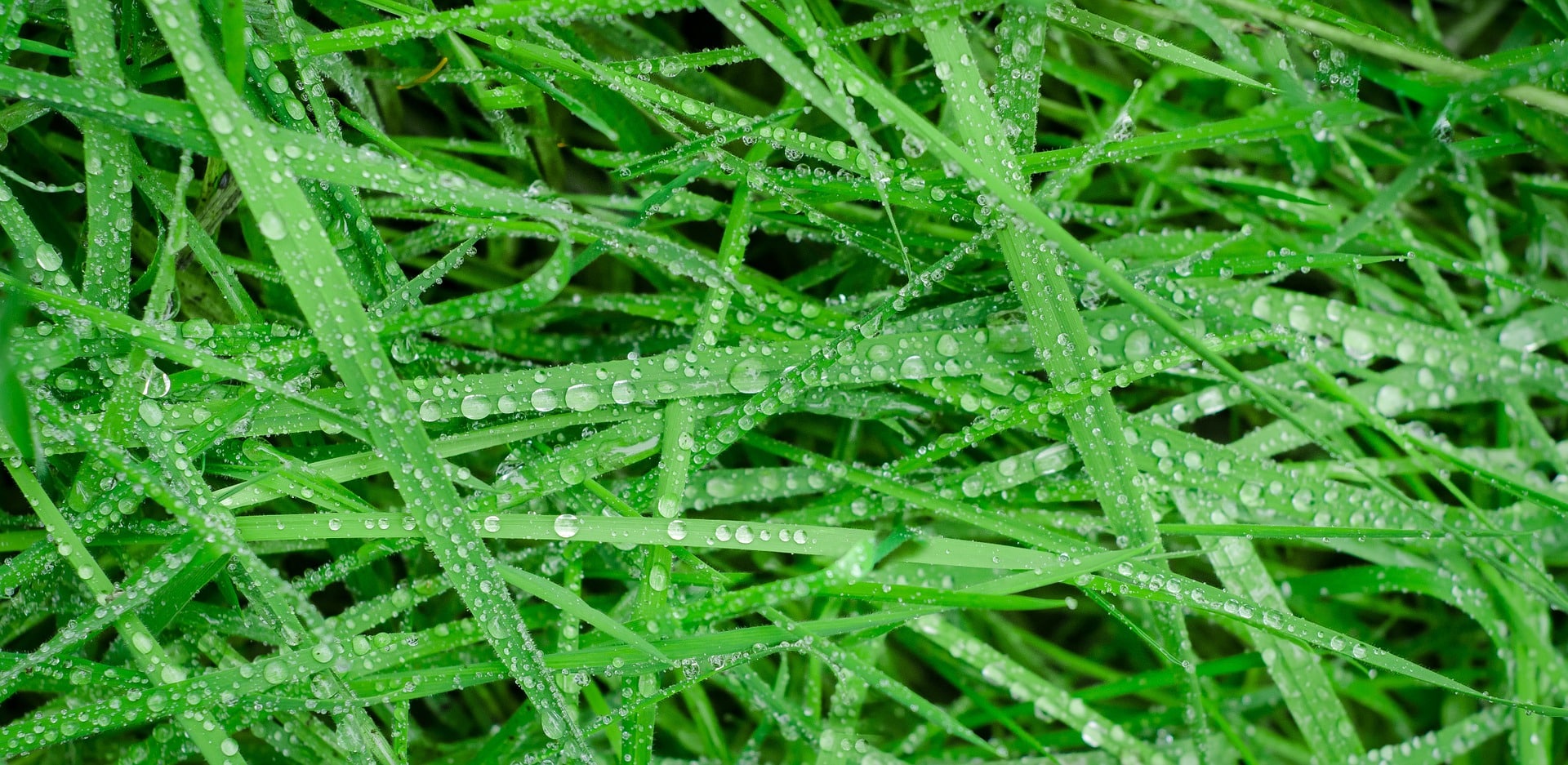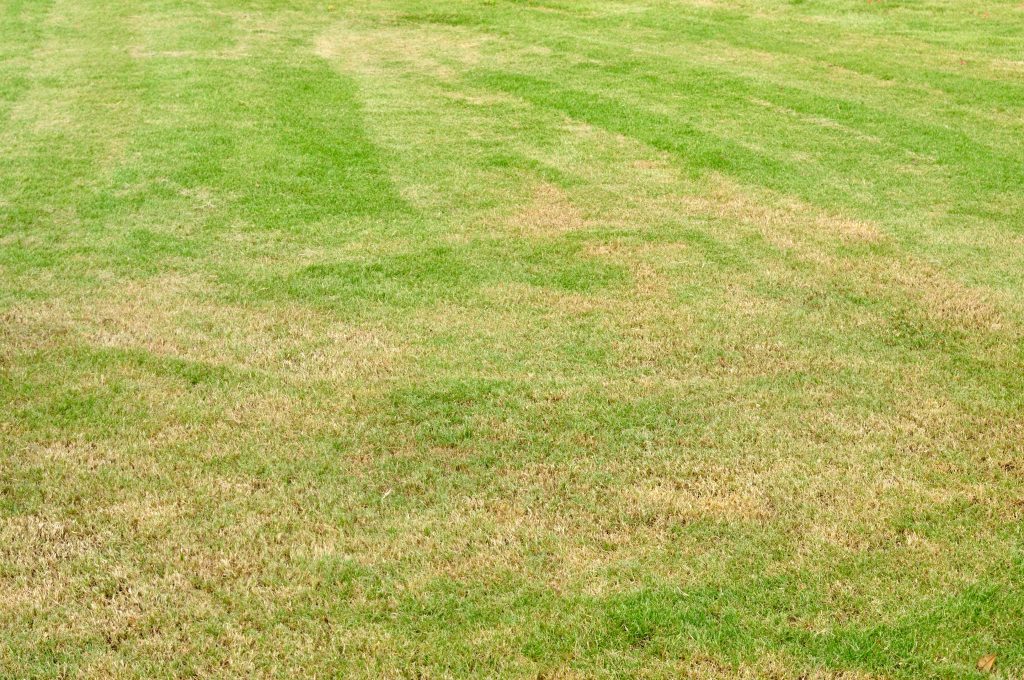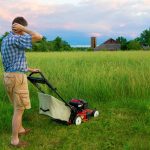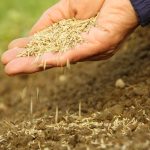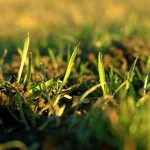If you live somewhere that gets a lot of rain, you might be wondering whether or not you can mow your lawn when it’s wet.
In this guide, we’ve explained why you can mow a wet lawn, why it’s generally a bad idea, and how to do it correctly, if you need to cut wet grass.
Can you cut wet grass?
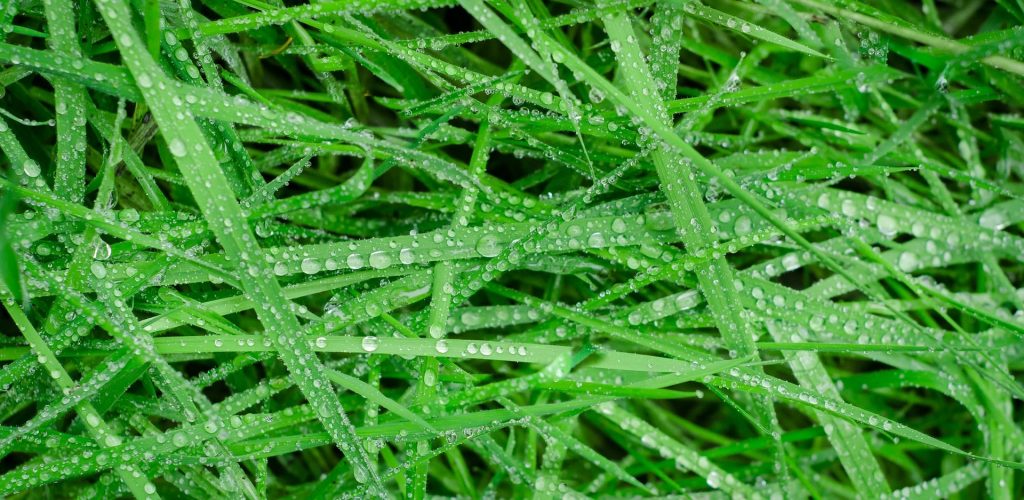
You can mow wet grass, if you do it the right way, but it’s best avoided in most circumstances.
Here’s why you should generally avoid mowing your lawn when it’s wet.
- You might damage the grass. When your lawn is wet, it’s much more difficult to get a clean cut, and you’re more likely to rip the grass blades. This can harm the health of your lawn, and make it more likely for diseases to take hold.
- You might damage your lawn mower. Wet conditions can cause corrosion, and on some lawn mowers, wet grass clippings can clog up the cutting deck. Also, if you use an electric lawn mower, moisture can wreak havoc with the circuitry (not to mention the risk of an electric shock).
- Once you’re finished mowing, you’ll need to clean wet grass off the wheels, blades, cutting deck, and top of the mower, which can take a lot of time.
- You’ll leave some wet grass clippings on your lawn, which can lead to lawn diseases taking hold, as they suffocate your lawn. Fungal diseases for example thrive in wet conditions – if they take hold in a clump of wet clippings, you might get brown spots on your lawn. This is why it’s important to bag your clippings if you have to mow your lawn when it’s wet.
- Mowing a wet lawn is much more difficult than cutting dry grass. You may need to make multiple passes to get the grass as short as you’d like it.
- When the ground is wet, it’s more of a slip hazard, which increases the likelihood that you might get injured when mowing the lawn.
In short, it’s best to wait for your grass to dry before cutting it, if at all possible.
When can you mow wet grass?

Most of the time, it’s best to wait for your grass to dry before mowing it. However, there are situations where you can consider mowing a wet lawn. For example:
- Your lawn is extremely long, and there is no sign of the rain subsiding for at least a week. If your grass gets too long, it can become very difficult to cut, even when dry. However, you don’t want to take too much off when you mow a wet lawn.
- You need to do a final mow before the weather gets too cold. If your lawn is too long heading into winter, this can cause problems, because you generally don’t want to mow your lawn during the winter months.
- You’re about to go away for a while, your lawn is getting very long, and you won’t have the chance to mow the grass before it dries.
Most of the time, you can prevent the need to mow a wet lawn by carefully planning your mowing schedule, and keeping an eye on the weather forecast.
How dry should my lawn be before mowing it?
Ideally, you want your lawn to be completely dry before mowing it. Meaning, if you run your fingers through the grass blades, you don’t feel any moisture on your hands.
If your lawn is wet, you want to wait at least until the soil is dry before mowing it. Meaning, if you walk on the lawn, your shoes shouldn’t sink into the ground at all.
How to cut wet grass
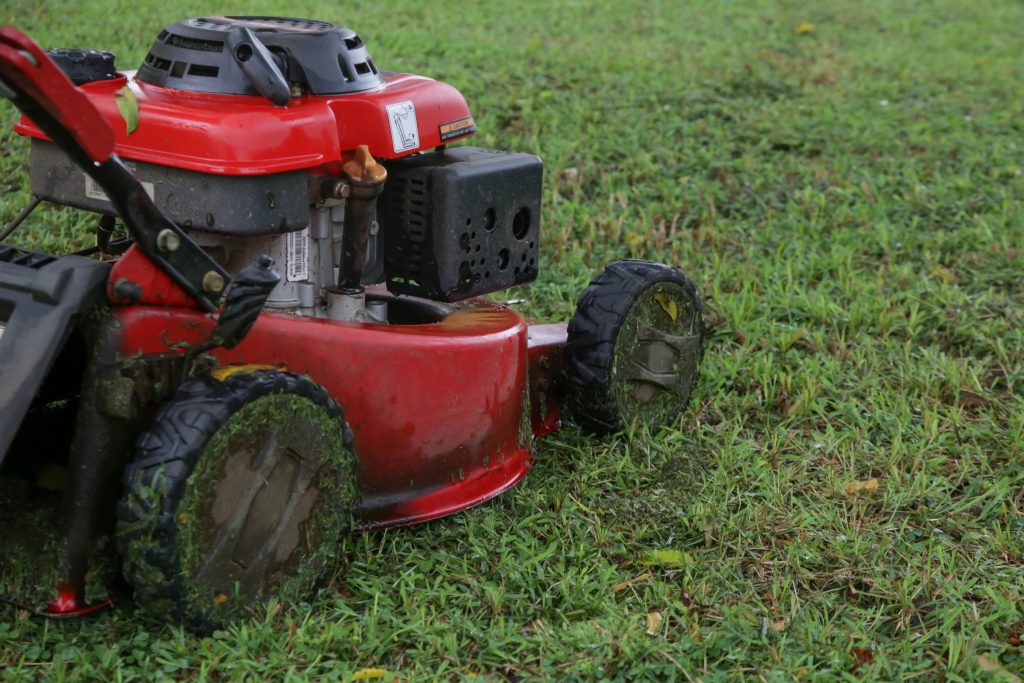
If you absolutely need to cut your grass when it’s wet, here are some tips to make the process successful.
- Don’t mow the lawn immediately after it rains. Try to wait for it to dry out as much as possible.
- Only use a manual lawn mower or a petrol lawn mower, ideally a self-propelled one. Do not use a corded or cordless electric mower, or a ride-on mower, as they may struggle for traction on wet surfaces. Also, don’t use a roller lawn mower, as they can be too heavy, and may sink into the ground, or damage your lawn.
- Sharpen your lawn mower’s blades as much as possible, or even consider replacing them if they’re very blunt. If you don’t do this, your lawn mower may struggle to cut the grass effectively.
- Raise the cutting height as much as possible. This minimises the amount of grass clippings produced, reducing the likelihood of leaving clumps on your lawn, and/or clogging up the cutting deck.
- Bag your grass clippings if the grass is wet enough that they will clump up easily. Dealing with wet grass clippings is annoying, but it’s better than leaving them on your lawn, where they can encourage diseases to flourish.
- When you finish mowing, clean the mower thoroughly. Ensuring that it’s not raining, first use the washout port if you have one to remove as much debris as possible, then run the mower blades for a minute or two to dry the deck. Alternatively, with the mower on a hard surface, spray water at an angle into the ground, just under the cutting deck, so that it reaches inside, and run the blades. Do not spray up and into the cutting deck as this can result in water getting in places it’s not meant to be, potentially damaging your lawn mower.

I’m Josh, and I’m the head writer at Lawn Care Pro.
I love everything lawns, but I’m a bit of a lawn mower nerd. I spend a lot of my free time tinkering with mowers, and planning my mowing schedule for the next few weeks.
I’m also into cars, which comes in very helpful when servicing a mower engine!

